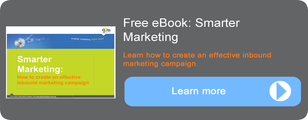
Our super-smart friends at Kuno Creative recently wrote a great blog on how to build a business case for funds for inbound marketing.
Even though inbound marketing is now an essential part of most company’s marketing strategy, one question still persists in the minds of many business owners and executives: How much does it cost?
It’s a valid question because inbound marketing is as much a change in process as it is an investment in digital marketing.
What's the right level of spending?
A recent Gartner survey showed that, on average, US companies spend 2.5 percent of their revenue purely on digital marketing activities and its expected to grow by 9% in 2013.
So if your company generates, say, $5 million in revenue, you would likely spend $125,000 on inbound/digital marketing.
Scott Margenau at ImageWorks Studio put together this table to help guide budgeting:
| Revenue | Marketing Budget |
| Less than $5 million | 7-8% |
| $5-10 million | 6-7% |
| $10-100 million | 5-6% |
| $100-300 million | 3-5% |
| More than $300 million | 3-4% |
Whilst we would caution that every industry is different there does appear to be one constant: Firms frequently underestimate the cost of marketing. As inbound marketing requires a longer term commitment, this can cause some concern among stakeholders. Equally where you are in your inbound marketing investment cycle will also require different types of spending.
Figuring out your required investment
Lets look at 3 different stages you may be at with your inbound marketing and what investments you will need to consider.
I'm Just Getting Started
If you are just getting started with inbound marketing, then there are certain investments you need to make to launch successfully. First, you need the right software. As HubSpot partners, we obviously recommend HubSpot’s all-in-one marketing platform because it covers features you need to start out on the right foot—and the ones you’ll need in the future. But whatever software you choose the tools you will need are:
- Blogging platform
- Social media publishing and monitoring
- SEO tracking
- email tool
- A leads database
- Landing pages and forms
- Workflows for automated responses
- Comprehensive analytics
Once you have the software, it's very common to complete a website refresh to fully take advantage of the platform. In the world of inbound marketing your website becomes a destination for your buyers to interact with you.
You will also need to create genuinely interesting and valuable content in the form of blogs and downloadable guides and ebooks that will drive traffic to your site and generate leads.
A refresh and content work in tandem because you can design and write new web content with the same targeted buyers in mind all at once.
Investments: Marketing Software, Website Refresh, Content
Now, I Want More Leads
If your website is already optimised for lead capture and you’re generating content to bring in traffic and leads, then your next investments will be designed to increase the quantity of traffic and leads coming into your system.
A focused demand generation programme can include different forms of advertising, from social to PPC to traditional print ads. In addition, promoting your educational content through paid third-party email blasts from relevant trade publications will help you generate new leads.
Finally, public relations outreach to relevant media outlets and other influencers can help you build relationships that can boost your online presence. Engaging with buyers and thought leaders via social media can boost your profile.
Investments required: Advertising, Email Marketing, Public Relations, Social Media Engagement
I Want To Deliver More Sales
Lets be clear, the #1 goal for B2B marketers is to deliver more sales ready leads to the sales team. Once you’ve built the infrastructure for capture and generation, you can implement programs, such as lead nurturing, to move leads through your sales funnel. This series of communications can be both via email and on your website, with personalised content presented to users at their various levels in your funnel. This nurturing is designed to continuously engage with a prospect until he or she is ready to buy.
Your marketing automation software should allow you to configure lead scoring and sales notifications as a person moves down your funnel. It’s important to invest in a CRM, such as Salesforce at this stage, if you haven’t already. Your CRM and marketing software working together are the single best way to prove a real return on your marketing investment.
Investments required: Lead Nurturing, Marketing Automation, CRM
But I don't have the skills and/or the resources to do all that!
Many B2B Marketers find this list daunting. Which probably explains why the aformentioned Gartner study also pointed out that up to 50% of all inbound/digital spending is on outsourcing. Building and keeping a team that covers off the long list of required skills to deliver on the promise of inbound marketing is challenging.
This particularly applies to generating content. Consider utilising the services of a specialist firm, who "get" this increasingly dominant form of marketing. The skills gap and resource balancing becomes their issue, whilst you can focus on other priorities.
If you are keen to find out more about installing a comprehensive inbound marketing methodology for your own business, please feel free to download this free eBook.
Or if you would like to benchmark your own business why not take our simple excel based "B2B Marketing Health Check?"


